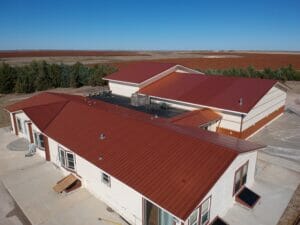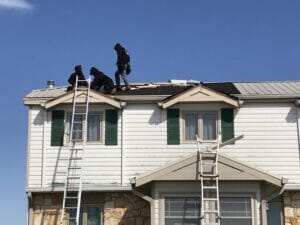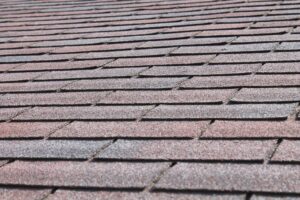When it comes to replacing a roof, there are several factors to consider. One of the most important considerations is the roof pitch. Roof pitch refers to the steepness or slope of a roof. It plays a significant role in determining the overall functionality, durability, and aesthetics of a roof. Let’s delve into the concept of roof pitch, explore its various types, and discuss its implications for roof replacement projects.

What is Roof Pitch?
Roof pitch is a measurement that determines the vertical rise of a roof for every horizontal foot. It is typically expressed as a ratio, such as 4:12 or 8:12, where the first number represents the vertical rise and the second number indicates the horizontal run. The higher the first number in the ratio, the steeper the roof pitch.
Types of Roof Pitches:
Low Slope Roofs:
- Roof pitches ranging from 1:12 to 3:12 are considered low-slope roofs.
- These roofs have a gentle slope and are commonly found in commercial buildings or modern residential designs.
- Low-slope roofs require different roofing materials and installation techniques compared to steeper roofs.
Medium Slope Roofs:
- Medium slope roofs have pitches between 4:12 and 9:12.
- They strike a balance between aesthetics and functionality.
- Many residential homes feature medium slope roofs, as they provide good water runoff without being overly steep.
Steep Slope Roofs:
- Steep slope roofs have pitches exceeding 9:12.
- They are commonly found in traditional residential designs, such as Victorian or Gothic styles.
- Steep roofs offer enhanced water shedding and can withstand heavy snow loads, but they require additional safety precautions during installation.

Implications for Roof Replacement:
Material Selection:
- The roof pitch plays a crucial role in determining the appropriate roofing materials.
- Low-slope roofs often require membranes or single-ply roofing systems to ensure proper water drainage.
- Steeper roofs can accommodate a wider range of roofing materials, such as asphalt shingles, metal, or clay tiles.
Water Drainage:
- The roof pitch directly affects water runoff and drainage.
- Steeper roofs shed water more efficiently, reducing the risk of leaks and water damage.
- On the other hand, low-slope roofs need additional waterproofing measures to prevent water pooling.
Structural Considerations:
- Roof pitch affects the structural integrity of a building.
- Steeper roofs exert greater stress on the supporting structure and may require additional reinforcement.
- Proper evaluation and reinforcement are necessary during roof replacement to ensure safety and stability.
Aesthetics:
- Roof pitch significantly influences the overall look and style of a building.
- Different roof pitches complement different architectural designs.
- It is essential to choose a roof pitch that harmonizes with the building’s aesthetics during the replacement process.
Roof pitch is a critical factor to consider when planning a roof replacement. It determines the appropriate materials, affects water drainage, impacts structural considerations, and contributes to the overall aesthetics of a building. Understanding the roof pitch of your property is essential for selecting the right roofing system and ensuring a successful roof replacement project.
Be sure to consult with Shull Remodeling, roofing services in Salina to assess your roof pitch and make informed decisions regarding materials, installation techniques, and any necessary structural modifications. By taking roof pitch into account, you can achieve a durable, functional, and visually appealing roof that enhances the longevity and value of your property.




